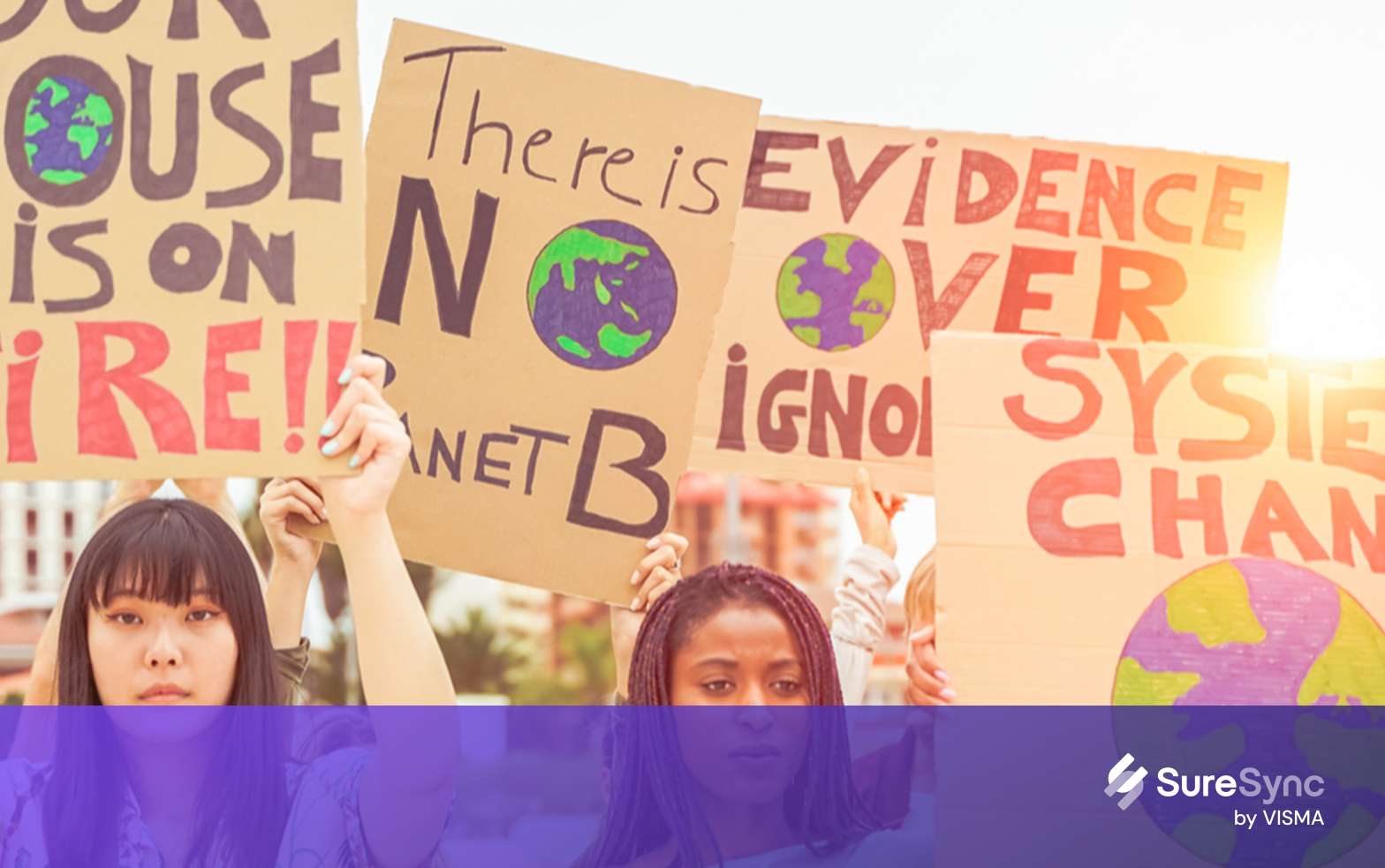A Race to the Top: How We Get Banks to Involve Sustainability in Financing Decisions
To combat climate change and biodiversity collapse, we need a new investment paradigm. The barriers to achieve this are two-fold. On the one hand, corporate governance needs to change. On the other, we need a system of standardized metrics to hold companies accountable and facilitate that shift. Banks, in particular, should have a standard means to assess environmental harm and take sustainability into account when they provide loans or financing.
First, we must forget “short-termism”
Global corporations are an inescapable force in today’s world. Over time, they have grown larger and larger, up to the point where they can finance the entire budget deficit of some developing countries. In recent decades, this has been the subject of some heated debates. The dust is finally settling and Milton Friedman’s shareholder doctrine has been pronounced dead. It’s clear that a narrow focus on shareholder wealth has also cost society dearly. Regulatory authorities are catching up and moving from discussions to action.
In July this year, for instance, the European Commission published its “Study on directors’ duties and sustainable corporate governance.” The report makes it clear that companies need to shift from short-term value creation for shareholders to long-term value creation for all stakeholders, including shareholders, if we are to meet the UN Sustainable Development Goals and the Paris Climate Agreement. Another example is the Dutch Corporate Governance Code, which has a revised focus on long-term value creation since 2016, taking stakeholder interests (rather than just shareholder interests) into account.
A recent report by the Global Compact Network Netherlands also calls for stakeholder inclusion as a key accelerator for the Sustainable Development Goals. The report states that while most companies recognize the importance of SDGs, only 35% is able to translate them into concrete business targets. In it, the Global Compact Network calls on companies to embed “a fuller consideration of their stakeholders’ legitimate needs and interests in their decision-making processes and as an ordinary part of conducting business.”
This move towards stakeholder capitalism is promising. It shifts the purpose of corporations to providing solutions for the world’s challenges, instead of just focusing on profits. Philips offers a great example. The company has a goal to improve the lives of 2.5 billion people a year by 2030, including 400 million in underserved communities. In practice, this has translated into improvements for Kenya’s healthcare system, where Philips’ Makueni County project has seen a 92% rise in patients and a 78% increase in utilization for primary care services such as antenatal care visits, skilled deliveries and immunizations. This is a model the health technology leader hopes to replicate across Africa.
Progress is being made on the regulatory side, and some companies are taking a new stewardship role that embraces new modes of sustainable governance. What of the banking sector?
We need non-financial reporting standards
In “The Financial System we Need,” The United Nations Environment Programme describes how we can move towards a new financial system. Certain activities should no longer be financed or financed differently, while others should be promoted. The question is how do we determine which activities are sustainable? To make progress across industries and at a global level, we need a standardized way to look at data. A real-life example is the EU taxonomy for sustainable activities, which outlines technical screening criteria for economic activities that can make a substantial contribution to climate change mitigation or adaptation, while avoiding significant harm to the environment.
Let’s look at CO2 emissions, for instance. Emissions should be measured at different levels: emissions by, for and through. “Emissions by” are the first scope. These are essentially emissions that result directly from company activities, such as those emitted by a factory. “Emissions for” are scope two. These are emissions that companies produce indirectly, such as those emitted to operate factories (in electricity or energy use). “Emissions through” are those that result from the use of a product. For example, the emissions put out by a car from a particular automotive manufacturer.
Gathering this data is not easy and it’s even harder to report on it. The emissions example above is only one among a plethora of data points we should be measuring. Others include the amount of waste produced, socially just labor practices, equal gender representation on company boards, etc. It’s equally important to look at interconnectivity between business activities. For example, a pharmaceutical company might be measuring the emissions produced by its factory, but what of the ingredients used? It’s estimated that up to 50% of pharmaceutical turnover can be attributed to natural capital (such as rainforest resources). We need to be measuring effects that are not only “close to home,” but also those that are further away, from suppliers and sub-suppliers.
Companies and financial institutions need critical support to implement these metrics-based performance assessments. Standardization can help to facilitate disclosure. We should work towards a common language for the global business and financial community to measure impact. The good news is, there is already a movement towards this.
Three inspiring initiatives
There are currently different standards companies use to track progress in the sustainability arena. GRI (Global Reporting Initiative) and SASB (Sustainability Accounting Standards Board) are two of them. Last year, SASB and GRI announced a new shared vision with CDP, The International Integrated Reporting Council (IIRC) and the Climate Disclosure Standards Board (CDSB), which will drive a holistic system for reporting across the value chain. In fact, not too long ago, IIRC and SASB merged into the Value Reporting Foundation. It’s expected that other standard setters will join this Foundation, for example CDSB. This push towards harmonizing standards will greatly facilitate reporting and reduce the burden of complexity.
The IFRS® Foundation, which sets standards for global accounting, has also published a consultation paper to assess the need for sustainability standards and determine what their role should be. This is a big deal, coming from an organization that previously said it would not play a role in setting standards in this area.
Another exciting initiative is being led by the EU, which is establishing a task force to assess the incorporation of non-financial reporting standards in its Non-Financial Reporting Directive. In our view, these movements might very well come together to yield results in the sustainability reporting area.
As the saying goes, “with great power comes great responsibility.” Companies and their financiers have a duty to care. If they can contribute to a more sustainable world, where there is more prosperity for all, it’ll be better to do business. Research from the Global Alliance for Banking on Values (GABV) confirms this. Banks that consistently scored high on material ESG issues delivered higher risk‑adjusted returns compared to those that performed poorly on the same issues. Ultimately, banks are safeguarding their own future by investing in the planet’s. That’s why it’s encouraging to see that 199 banks have signed up to be signatories of the UN-backed Principles for Responsible Banking. It’s time to embrace new standards that will allow more of them to do this.
Written by Kim Andersen, Erik Breen and Sicco Brakema


